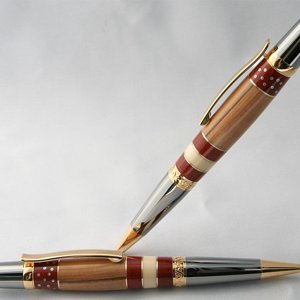If you are 'horrible' at sharpening, then yes, gravitate towards carbide. I agree with Ken that both carbide and HSS will do the job, but you need to find your preference. I actually use both HSS and carbide... I find that the material (or combination of materials; e.g, wood/wood; wood/acrylic; wood/metal, etc) will determine my tool. Some days, I just don't have the control I want and need to switch tools.
BUT - how sharp my HSS is will be a huge factor. Just last week I was turning a blank and one side my HSS didn't seem to cut nicely. I switched to a left-hand hold with the opposite face on the gouge (left side) and it cut like butter. The same tool, just a different approach and cutting edge that was sharper. So be aware that your sharpening skills do matter.
Recently, I have been using a 'Magical skew' and am very pleased with the results.
So...
Learn how to use your tools! Whatever you got will probably do a good job with practice. We all start in the 'D League' and want to progress to the 'majors!' Enjoy the ride.


